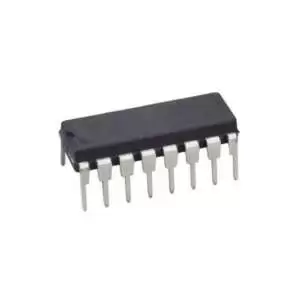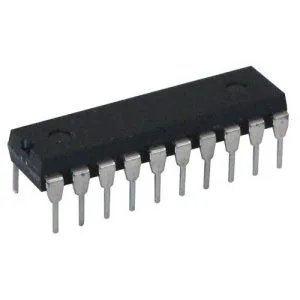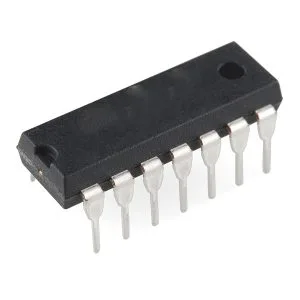74155 Dual 2-Line to 4-Line Decoder/Demultiplexer IC – Efficient Data Routing for Digital Circuits
Features:
- Dual Decoder Design: Contains two independent 2-line to 4-line decoders, allowing for parallel processing.
- Demultiplexer Functionality: Capable of routing a single input to one of four outputs based on control logic.
- TTL Logic Compatible: Fully compatible with TTL logic systems, ensuring easy integration with a variety of digital circuits.
- Active Low Outputs: All outputs are active low, providing a clear indication when activated.
- Control Inputs: Two select lines per decoder for choosing which of the 4 outputs will be activated.
- Low Power Consumption: Designed for low power operation, making it suitable for battery-operated devices and low-power circuits.
- Wide Operating Voltage Range: Operates within a wide voltage range, ensuring compatibility with different systems.
Specifications:
| Attribute | Value |
|---|---|
| IC Type | Dual 2-Line to 4-Line Decoder/Demultiplexer |
| Number of Channels | 2 (Dual decoders/demultiplexers) |
| Package Type | DIP-16 (16-Pin Dual In-line Package) |
| Input Voltage Range | 4.5V to 5.5V (Vcc) |
| Logic Level Compatibility | TTL Compatible |
| Select Lines | 2 Select Lines per Decoder (S0, S1) |
| Control Logic | Active Low |
| Maximum Propagation Delay | 15ns (typical) |
| Operating Temperature Range | -40°C to +85°C |
| Output Type | Digital (Active Low Outputs) |
| Current Sink/Source | 16mA max per output |
| Power Supply Current | 5mA max (typical) |
Applications:
- Data Routing: Ideal for systems where a single input needs to be routed to one of multiple outputs based on control signals.
- Multiplexing and Demultiplexing: Commonly used in communication systems, control systems, and multiplexed signal applications.
- Memory Addressing: Can be used in memory devices where address lines need to be decoded to select one of several memory locations.
- Digital Control Systems: Used in digital systems where specific outputs must be selected from a range of possibilities based on input conditions.
- Microprocessor Systems: Often used to expand microprocessor I/O by decoding multiple lines into separate address lines or control signals.








Reviews
There are no reviews yet.